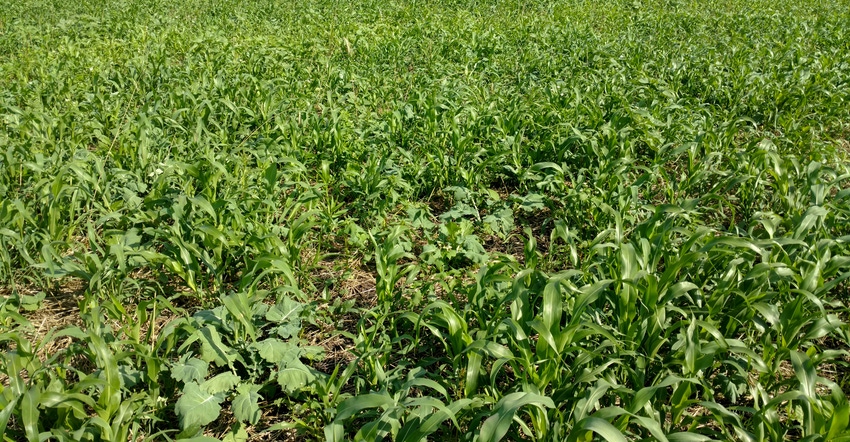
If you have prevented planting acres this year, you don’t have to fallow it. You can plant forages on those acres until about Aug. 15. If you get enough rain and avoid an earlier than normal frost, you likely get a decent stand and a good amount of dry matter for haying or grazing.
But because USDA won’t let you begin to harvest prevented planting acres until Nov. 1, you need to select the right forage species to make the most of the opportunity.
Brassicas — turnips, kale and radishes — are good choices for grazing, says Kevin Sedivec, North Dakota State University Extension rangeland management specialist.
Brassicas keep growing after a frost and produce a lot of forage, he says. However, brassicas shouldn’t be more than 50% of the seed mix.
Other plant species to include with brassicas are:
cool-season cereals such as oats, barley and triticale
warm-season grasses such as foxtail millet and sudangrass
broadleaf plants such as sunflowers and buckwheat
legumes such as forage peas, clovers and vetch
The seed mix should include a source of fiber, such as a cereal or warm-season grass, to keep livestock’s rumens healthy, Sedivec says. Also, mixes are easier to establish than monocultures and are good for soil health.
Recommended species for late-season haying include:
cool-season cereals — oats, barley, triticale, etc.
warm-season grasses — foxtail millet, sudangrass, etc.
legumes — forage peas, clovers, vetch, etc.
The cereal grains and warm-season grasses can be seeded in monocultures or mixtures with or without a legume. However, mixtures are preferred to increase diversity that benefit the soil microbial population, Sedivec says.
Further information is available from the NRCS South Dakota Cover Crops website and the NRCS Cover Crop Economic Tool.
Silage not practical
Sedivec does not recommend trying to make silage out of prevented planting forages. Since you can’t start harvesting until Nov. 1, the plants will likely be too dry.
After a killing frost, plants dry rapidly. Silage moisture needs to be 65% to 70% to be stored in bunkers and 60% to 68% to be stored in silo bags. Haylage should be 40% to 60% moisture.
Herbicide and fertilizer
Pay special attention to prior crop history and herbicides that have been applied when selecting seed for prevented planting acres. Some herbicides can affect subsequent crops.
“You need to make certain that this year’s ‘Plan B’ is compatible with last year’s production practices,” says Sara Bauder, South Dakota State University Extension agronomy field specialist
Also, be cautious about applying high levels of nitrogen fertilizer to a planned forage crop, especially with cool season small grains such as oats. High levels of soil nitrogen often lead to excessive nitrate accumulation in the forage, she says.
Seeding dates
Cover crops for late-season grazing should be seeded no later than Aug. 15 to be cost-effective in the Northern Plains, Sedivec says.
Earlier planting will increase overall tonnage and enhance deeper root growth, which will increase organic carbon and food for soil microbes. Warm-season crops will have limited value if seeded after Aug. 1 due to the short growing season that remains.
Finding buyers
If you don’t have livestock yourself, you might be able to sell forage to someone who does. Resources include the NDSU Feedlist, the South Dakota Grazing Exchange and the SDSU Extension Feed & Forage Finder Facebook group.
North Dakota State University and South Dakota State University Extension Services provided information for this article.
Read more about:
Prevented PlantingAbout the Author(s)
You May Also Like






